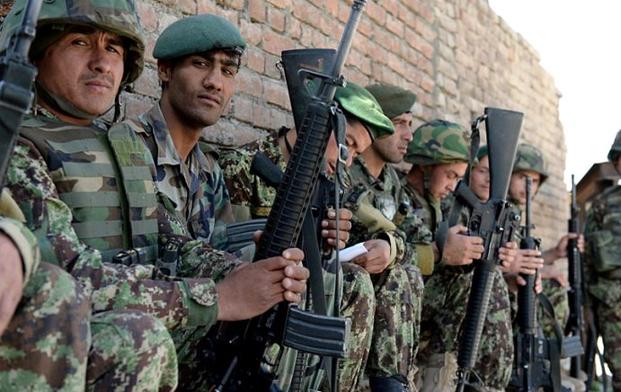Remember that story about the inspector general report that said the U.S. wasted millions on HyperStealth camouflage for Afghan soldiers? Well now the Pentagon is going to do an assessment to see if there are any other camouflage patterns that work well in Afghanistan.
John Sopko, special inspector general for Afghanistan Reconstruction, told lawmakers today that the Defense Department spent $94 million on a proprietary camouflage pattern – known as HyperStealth Spec4ce Forest -- for Afghan army forces “without determining the pattern’s effectiveness in Afghanistan compared to other available patterns.”
The effort resulted in $28 million in excess costs to the U.S. taxpayer and if unmodified, Sopko said, this procurement “will needlessly cost the taxpayer an additional $72 million over the next 10 years.”
Military.com ran a larger story about the criminal investigation into the DoD effort today, but here is what I found really interesting.
Peter Velz, director for Afghanistan Resources and Transition for the Office of the Secretary of Defense for Policy agreed with the Sopko’s report that a “DoD organization with expertise in military uniforms should conduct an analysis of whether there might be a more cost effective uniform design and camouflage pattern that meets operational requirements,” Velz said.
“We believe this is the best way to determine the merits of the report’s claim that DoD may have spent as much as $28 million over 10 years on uniforms that may be inappropriate for Afghanistan’s operational environment.”
The appropriate DoD experts have begun developing a plan for the study which is expected to begin in the coming weeks, Velz said.
I am sure a lot of you remember that U.S. Army conducted an exhaustive camouflage study, which featured an operational evaluation of multiple camouflage patterns – including HyperStealth, in Afghanistan. The effort resulted in the Army selecting Crye Precision’s MultiCam pattern in 2010 as the service’s official pattern for Afghanistan.
Since then, the Army has adopted its new Operational Camouflage Pattern, a government-owned pattern that closely resembles MultiCam. OCP is actually Scorpion W2, a revised version of the original Scorpion pattern that Crye Precision developed for the Army’s Future Force Warrior in 2002. The company later made small adjustments to the pattern for better performance and trademark purposes and called it MultiCam.
Anyway, OCP is pretty close to MultiCam and government owned, so it would be cheaper to buy.
Also, Army Special Operations Command also did its own camouflage tests and selected MultiCam years before big Army did.
But rather than use that data, DoD is going to do another camouflage study for Afghanistan. The Natick Soldier Research, Development and Engineering Center estimated that it would have taken 22 weeks and cost $156,400 to test the utility of a pre-selected textile pattern for use in Afghanistan; or 26 weeks and $228,400 to compare the advantages and disadvantages of several pre-selected patterns for use in Afghanistan; or 14 months and $420,400 to independently develop a textile pattern appropriate for use in Afghanistan, according to Sopko’s study.
Sometimes it’s really hard to keep my head from shaking.









